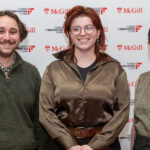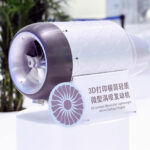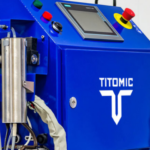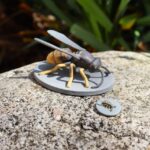Researchers in Canada have published the findings of their experiments into 3D printed octet-plate lattice structures with tunable absorption properties.
Tunable energy absorption in lattice structures offers significant potential for use in lightweight cellular cores of energy-absorbing structures. Using structurally graded and multi-material lattices, the researchers used plate-based octet unit cells as the basis for their tests to evaluate their energy absorption capabilities during quasi-static compression loading.
You can see what an octet unit cell looks like in the image below, along with unit cells with various grades.

Sandwich structures, with lightweight cores attached to face-sheets, are commonly used in applications where high flexural stiffness and impact absorption are required. The traditional honeycomb core is a popular choice, but they’re susceptible to crushing. Using octet unit cells with various different geometries may offer a superior solution compared to the traditional honeycomb sandwich panel.
Plate Thickness
With regards to the effects of unit cell geometry on the lattice, the researchers examined the effects of varying the plate thickness and changing the filament material along the lattice in the direction of the applied compressive force. These alterations created variations in the structure and material compositions of the plate-lattice structures. The study also analyzed the compressive stress-strain behavior of these structures, as well as the effects of modifying each unit cell’s geometric parameters.
The unit cells were designed using Solidworks CAD software, and printed with an FDM-type printer. The filaments used were different varieties of nylon and nylon composite (with chopped fibers).

The compressive stress-strain behavior analysis revealed a nearly 10% increase in specific energy absorption (SEA) in the plate thickness graded designs at higher strains compared to the baseline octet lattices. Additionally, multi-material arrangements significantly altered the onset location of structural collapse.
Finite element analysis of the structures was used in the project, and the simulation models showed good agreement with experimental results. One key finding was the high sensitivity to the plate inclination angle, which led to substantial changes in maximum stress values and control of the overall SEA.
These results demonstrate the potential to customize octet lattice structure designs through additive manufacturing to better suit the expected load and application. By enhancing energy absorption capabilities, lightweight cellular structures can be used in a variety of industries, including automotive, aerospace, and civil engineering, where improved energy absorption is critical for safety and performance.
Summary
The study’s findings highlight the promise of tunable energy absorption in lattice structures for use in lightweight cellular cores of energy-absorbing structures. Both structurally graded and multi-material lattices were found to offer improvements in strain. The capacity to customize lattice structure designs through additive manufacturing further expands the potential applications of these innovative structures.
You can read the full paper, titled “3D printed octet plate-lattices for tunable energy absorption”, published in the Materials & Design journal, over at this link.
Come and let us know your thoughts on our Facebook, Twitter, and LinkedIn pages, and don’t forget to sign up for our weekly additive manufacturing newsletter to get all the latest stories delivered right to your inbox.










